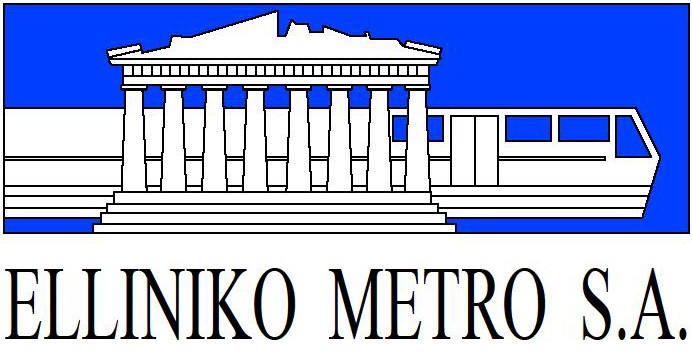The geological and geotechnical conditions along the alignment of the first 18 km of the Athens Metro lines had been extensively investigated, analysed and evaluated. The results of this survey were used as a basis in order to develop the geotechnical parameters required for the safe design of tunnels, stations and other underground structures.
The geological substratum of the city of Athens consists of a series of geological formations known as the system of the Athenian Schist, mainly at the depth range of the Metro works.
”Athenian Schist” is a term used to describe a sequence of originally sedimentary, flysch-like rocks of possible Upper Cretaceous age, which have subsequently suffered metamorphosis.
The system includes clayey and calcareous sandstones, greywacke, siltstones, limestones and shales. Igneous activity has locally introduced peridotitic and diabasic bodies causing lithologic deformation and significant deformation of the pre-existing members.
It is possible that during the geological era of Eocene the Athenian Schist formations suffered intense folding and thrusting. Additional factors, which affect rock mass quality, are the widespread weathering and the alteration of the deposits.
As a consequence, the rock mass is highly heterogeneous and anisotropic not only in the macroscopic-geotectonic scale of Attica Basin, but mainly in the mesoscopic scale of the tunnel works. This inherent heterogeneity of the Athenian Schist rock masses gives rise to uncertainty while correlating adjacent boreholes, something that renders the design of reliable geological sections particularly difficult.
The quaternary formations deposited over the Athenian Schist consist of river deposits (argillaceous and sandy materials, as well as conglomerate usually of a small thickness). In addition, large areas are covered by diluvial deposits among the hills consisting of clay silt and sand in alternations with breccia loosely cemented.
Finally, a surface layer with recent deposits or artificial backfillings of various thickness (1-6m) exists in the majority of the areas along the alignment of the Project. These deposits were formed during the historical years.
The Athenian Schist consists, in general, of rocks with a small permeability, with the exception of rocks with a large secondary porosity (open discontinuities, karsts in calcareous rocks, heavily fractured material of massive rocks). Thus, in general, no large quantities of underground water, which would make more difficult the execution of excavation works were encountered, despite the fact that based on the readings of the piezometers the levels were only a few metres below surface.
The Metro has been designed in such a way as to address the impact of the most adverse conditions of seismic activity recorded to date, according to the Greek Design Standards.
Prior to the construction of the Project, geotechnical investigations were carried out in order to obtain the appropriate information required for the design of such a Project. The program included more than 350 boreholes which supplemented the 200 boreholes executed along the line alignment during previous surveys, i.e. one borehole, on average, at approximately every 30m along the entire length of the alignment. Each borehole was performed at a depth of approximately 20-30m below surface. The execution of geotechnical surveys continued even during the construction phase and 1100 additional boreholes have been executed in order to serve the needs of the Base Project.
The most important geotechnical activities carried out by ELLINIKO METRO are as follows:
- Survey of the geological and geotechnical conditions with 1100 boreholes, most of which were executed with continuous soil and rock core sampling, while some of them were used for the execution of on site tests for the optimum investigation of the conditions prevailing at the levels where the Project is constructed, as well as for the installation of special geotechnical monitoring instruments.
- Geophysical surveys, using various techniques, such as the ground radar penetrating the soil tracking down buried data, such as underground river channels, P.U.O. networks and possible major archaeological finds.
- Measurement of the underground water table along the tunnel alignment in order to estimate the general direction of the water flow, as well as any annual variations of water level for the optimum planning of the Project.
- Development of the main parameters of soil and rock strength, to be used for the design of the Project structures. These parameters are based on results of laboratory tests of soil and rock samples, as well as on other data collected from in situ tests.
- An extended geotechnical monitoring program before, during and after the execution of excavation works is executed for the safety of the overlaying and/or adjacent buildings and structures, as well as for the verification of the assumptions regarding the Project planning.


